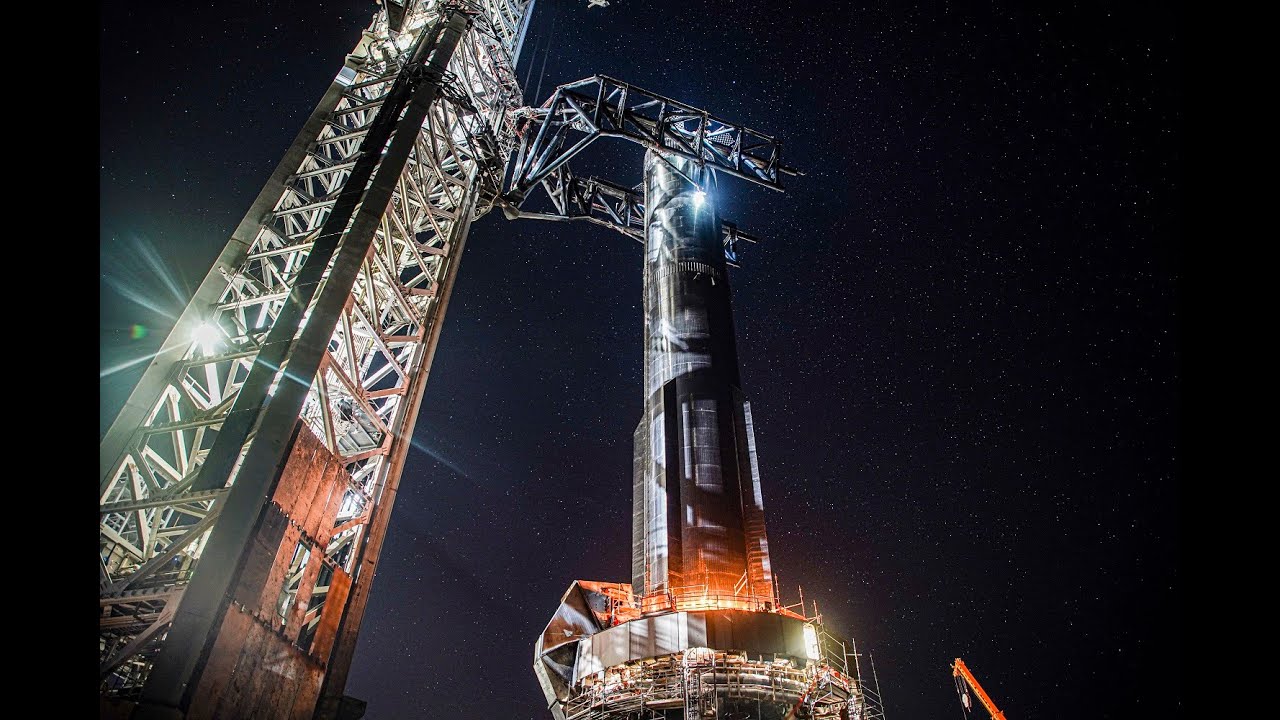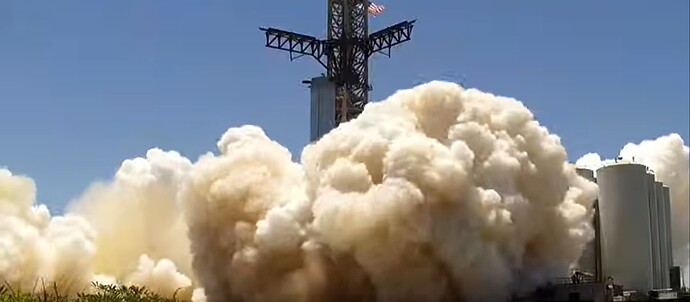2.7 second fire intended for 5.
4 engines shut down very early and that appears to have triggered an abort.
Here is the SpaceX live stream of the static fire test. Ignition occurs at the 2:15 mark in the video.
The commentary before the firing noted that the engines would not be firing at full thrust, just as is done in a normal launch, but did not say if the partial thrust used was the same as in a full launch. The firing duration was given as 2.74 seconds, with four engines shutting down during the ignition process. There was no apparent flying debris, but a prodigious amount of steam clouds.
For the test, the liquid oxygen tank was almost completely filled, but the methane tank contained only enough fuel for the test.
What accounts for the off-white exhaust to the lower left?
Looking at the drone footage, my guess is the off-white exhaust is just to-be-expected dust entrained from outside the deluge system. There doesn’t appear to be any serious ground disturbance.
Look on the bright side! Revamped Stage 0 survived its first test by fire. Somewhere, a civil engineer is enjoying a well-earned beer.
Some Guy on The Internet™ (@SpaceDanielX on 𝕏) posted a Twitter thread with what seems to me interesting and plausible observations about what the static firing results say and don’t say about the reliability of Raptor 2 engnes.
Here is the entire thread collected into one document by Thread Reader. This is what I found interesting.
I saw many people worried about the reliability of Raptor 2 after today’s test. Let’s actually compare the engines of B7 and B9 so we can get a better understanding of the situation. The oldest and newest engines on B7 were R25 and R105.
For B9, that’s R73 and R186. R79 has been spotted in January of 2022. It usually takes two months from the completion of the engine to the arrival at Starbase, so it’s safe to say that Raptors around that serial number (~oldest on B9) have been manufactured in late 2021.
Now let’s look at the newest engines. Raptor engines around SN 200 have been spotted in January of this year, so every single engine on B9 has been manufactured and tested before IFT-1 and the major static fire tests involving multiple Raptor 2 engines.
And don’t forget that this is not the operational version of Raptor, most engines feature improvements over the previous ones, being tested to its limits and learning how to improve the performance and reliability of the engine. It is also important to note that SpaceX has been very quick with the testing of B9. With merely 2 days between its first engine test (spin prime) and the 33 engine static fire it shattered all previous records. It is very much expected that there are some faulty Raptor engines that cause issues during testing.
Doesn’t the relevance largely depend on which engines were the ones to fail?
That was my conclusion. There is going to be a substantial blast of steam and condensed water vapour moving radially outward from the orbital launch mount, and that’s likely to pick up dust which, in a south Texas construction zone, is pretty much everywhere. There were also photos from the NASASpaceFlight Webcast (again, an independent site having nothing to do with NASA) that showed chain link fences around the launch pad perimeter which had apparently been blown down by the plume from the exhaust and water deluge steam. That indicates plenty of “rocket wind” to stir up dust.
I doubt he has a map of the serial numbers installed on Booster 9, and to my knowledge SpaceX hasn’t identified which four engines shut down anyway. I think the relevant point is that apparently all of the engines on Booster 9 were manufactured before the Booster 7 flight, so unless there were retrofits done in the field, they do not incorporate changes made as a result of subsequent tests and design modifications since then.


